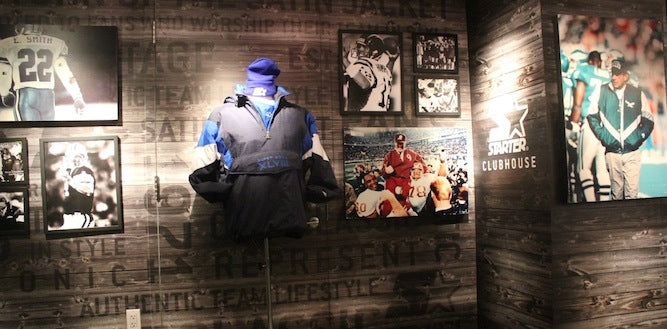This is a guest post from Melissa Gonzalez from The Lionesque Group.
Taking the leap from selling exclusively online to entering the world of physical retail doesn't have to be an "all-in" experience. In fact, thanks to the rise of the pop-up, you can now experiment with offline retail while avoiding all the risks and overhead costs that come with starting a traditional brick and mortar operation.
However, in order to save you from losing sleep (and money) over planning your first physical retail experiment, we're going to walk through the most important questions you'll need to ask yourself when launching a pop-up.
Let's start by clarifying the term, it gets thrown around a lot. A “pop-up” is a short-term, temporary retail event that is "here today, gone tomorrow". Pop-up retail is the temporary use of physical space to create a long term, lasting impression with potential customers. A pop-up shop allows you to communicate your brands promise to your customers through the use of a unique and engaging physical environment, a tactic even some of the most successful online retailers are deploying.
For example, during Super Bowl XLVIII there were numerous pop-ups around New York City, such as the Starter Clubhouse shown below, that allowed brands to interact with customers and provide unexpected experiences along Super Bowl Boulevard.

Then, there's also the likes of Marc Jacobs, a luxury brand, that is planning a pop-up shop for it's Daisy Fragrances during Fashion Week that will only accept “social currency” instead of cash or credit, which means fans will have to post to either Facebook, Instagram, or Twitter with the hashtag #MJDaisyChain for a chance to be awarded the product.

When organizing your own pop-up event, it's important to have a strategic plan to ensure your customers enjoy a one-of-a-kind retail experience. The short-term nature of pop-up events means that you'll have a limited window in which to draw in and engage your customers. Understanding your goals and finding the right physical location are the most important factors to making the most out of your pop-up event.
Now that we've got our bases covered, let's walk through three of the most important questions you'll have to answer to make your pop-up a success.
Question #1: What Are Your Goals?

Not all pop-up events are intended to sell merchandise. Not all pop-up events are intended to launch a brand. Pop-up events are about customer engagement. They are an opportunity to physically interact with customers, surrounding them with your message and getting feedback from them at the same time.
What makes pop-up events special is that they are unique to your brand and goals, so there is no formula that will work for everyone. However, some questions to ask when identifying the goals of your pop-up might include:
- Are you launching a brand for the first time?
- Are you announcing a new product line within an existing brand?
- Are you flushing out the current season's inventory to make room for new merchandise?
- Are you creating a holiday pop-up shop for the holiday season?
- Are you interested in testing new geographic regions in which to establish your brand?
- Are you a highly established brand interested in marketing and customer appreciation?
The answers to questions like this will inform you as to what your expectations should be for your pop-up event. You can hone in on what your purpose is, and what your customers' expectations might be. By having clearly defined goals and expectations, you'll be able to focus on building out a unique experience for your customers.

Pop-Up Shop Quickstart Guide
Thinking about hosting a Pop-Up Shop? This free guide includes 3 checklists that help frame what you're looking to accomplish through your Pop-Up Shop, different types of Pop-Up Shops, and design ideas to help get you started.
Question #2: What Is The Best Location For Your Pop-Up?

Once you've decided what the purpose of your pop-event is going to be, it's time to determine what the best location is for your pop-up event. During this process, you'll want to repeatedly ask yourself “where are my customers now, and where are the new customers that I want to attract?”. Obviously the first decision to be made is which city (or cities) to launch your pop-up event in. However, just as important as the city, is the neighborhood within the city that you select.
The importance of foot traffic cannot be overlooked when determining the location of your pop-up event. While natural foot traffic is always desirable and beneficial, not all cities have that organically built-in, for example, like New York City. In addition to foot traffic, you'll also want to investigate nearby transportation options, availability of parking, and other factors that might influence access to your pop-up experience.
Of course, cost per square foot will vary from neighborhood to neighborhood, and finding the right location is often a balance between what you want and what you can afford. However, just because a location is expensive doesn't always mean that it's the best choice for you. You'll also need to evaluate the space when looking at potential locations. A larger space might cost more to design and decorate, and will require more inventory to fill. Finished wood floors provide more of a gallery ambience, whereas open lofts have more of an industrial vibe to them.
Your goals and your budget will determine what features you are looking for in a location. Once you've established the criteria for a location, it's time to go hunting for a space.
Question #3: Where Can You Find a Retail Space?

As the pop-up market grows in popularity, traditional real estate brokers have begun dedicating more resources, especially in major cities, for listing short-term rental opportunities during long-term lease gaps. There are also a number of online marketplaces where you can research and scout for temporary locations, such as the Storefront.
When looking at locations, be sure to ask plenty of questions to ensure that the space meets your criteria, and remember that the cost of rent is only a portion of your overall budget. Make sure to find out:
- What is included with your rent? Does the rent include electricity, water and other services?
- Is there an Internet connection or wifi to set-up a POS or process payments?
- Are there security alarms?
- Is there a bathroom with a sink?
Don't forget that you'll have to account for expenses for insurance, design, marketing, staffing and inventory costs as well, so it's important to know what you'll have to spend on the space.
Once you have found a couple of “wish list” locations, take some time to visit those locations at various times throughout the day. Use different methods of transportation to get there, and take note of the foot traffic, what the peak hours are and especially the overall demographics of potential customers. Do they match what you are looking for? Be honest, not hopeful. If the location isn't a good match for you, don't be afraid to move on and find something better.
When you have found the right location for your pop-up event, it's time to get creative, so that no matter the size of the space, anyone walking in feels like they are submerged in the lifestyle of your brand.
(Image Credits: freshnessmag.com, Marc Jacob, The Storefront, SewingObsessed, HighsNobiety)

About The Author
Melissa Gonzalez specializes in brand activation and Pop-Up retail experiences. She is the founder of The Lionesque Group, a company that has produced over 65 pop-up retail experiences in New York, Los Angeles, and the Hamptons. Follow her @MelsStyles.
Read more
- How These 4 Pop-Up Shops Went Viral (And How Yours Can Too)
- Retailers, Here's Why Having a Brick-and-Mortar Store is a Competitive Advantage
- What Is Micro-Retailing? Why & How Retailers Are Going Small
- Deals on Wheels: Why More Retailers Are Taking to the Streets
- Brick and Mortar Stores: Types, Benefits, Examples (2024)
- Making the Leap to Retail: Why These Online Brands are Investing in In-Person Sales
- Small Storefront, Big Impact: Distinguish Your Brand with a Pop-Up Store at Expos
- 15 Tips to Help Retailers Snag Startup Funding





